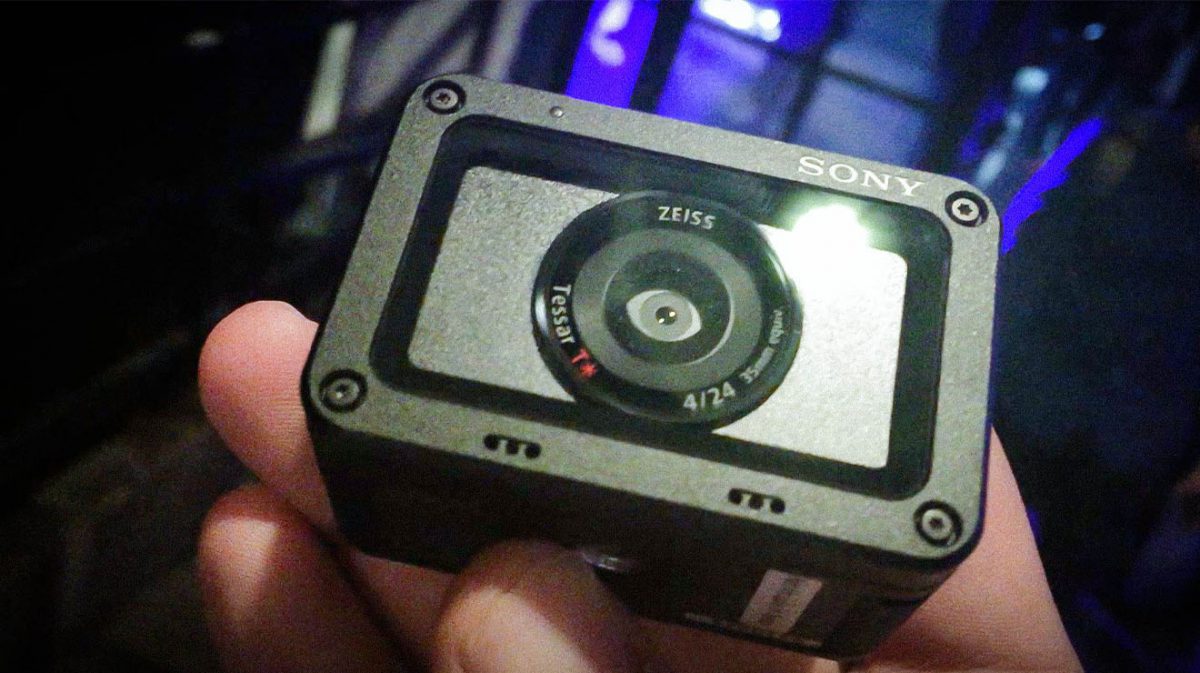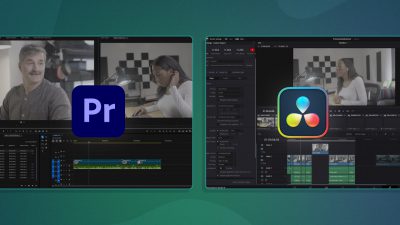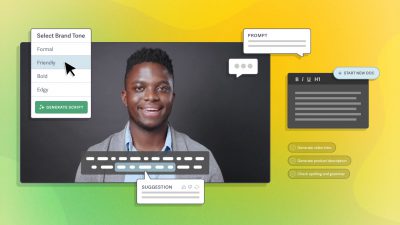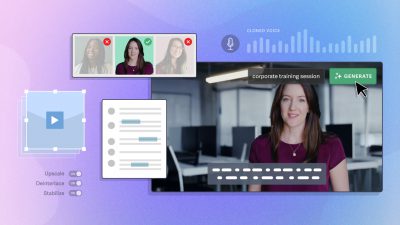Everything from their marketing to their compact and waterproof design tells you that action cams are for sports, adventures, or similar high-adrenaline endeavors. However, their innate flexibility has allowed for innovative uses in many areas of filmmaking.
In fact, newer models of these “action” cams are beginning to create a new category entirely: the everything camera. For instance, the RX0 by Sony exemplifies this trend towards highly versatile, lightweight, and capable cameras. We recently had the chance to test one out, and were surprised by its potential for business video applications.
In this post, learn what makes these new cameras so insanely useful from both a technical and business perspective. We’ll illustrate these points using the RX0 as an example.
The Features That Make Sony’s RX0 So Versatile
The RX0 has plenty in common with other action cams. It’s waterproof, shock resistant, and as a result, highly durable. Like other action cams, it’s also compact, lightweight, and easy to setup and start filming.
What really sets it apart from other action cams are its picture settings, the available controls, image quality, and focal length. Crammed into a take-it-anywhere package, it’s hard to come up with scenarios where you wouldn’t want to use a camera like this.
Here is some footage we captured at an event showcasing the RX0.
Our immediate takeaway was that it’s highly versatile, and captures great-looking footage. Now, let’s break down what makes it so special.
Picture Profiles
In the past, action cams typically had overly-vibrant color modes optimized for extreme sports. Heightened sensitivity to blues make those ski runs pop, and look so sharp you could cut your finger on them.
That’s all well and good if you’re on the slopes or on the water, but what about in an office? That type of color profile might be the exact opposite of what you’d want in a brightly lit business environment.
The RX0 is set apart by the fact that it uses uses the same color space and picture profiles as other cameras in their lineup. For instance, you can record footage in Sony’s log profile, which matches across all their cameras.
The advantage is that any footage you capture using different Sony cameras will match perfectly so long as they are set to the same color profile. So, if you are using multiple RX0’s, or an RX0 with another Sony camera, the footage will look the same. This can save a lot of time and effort during post production.
Log Footage?
Log footage is when the image in a video is compressed and flattened to preserve information. Instead of super bright whites, or noisy dark blacks, the image will record color extremes as shades of gray.
This keeps as much information as possible in the image because it prevents brights and darks from getting blown out or too noisy. Later, you would “unpack” the log footage by applying a LUT, or look-up table, which works sort of like an Instagram filter. It adds contrast and color-grading, so that the end result looks life-like, not washed out. You can apply different LUT’s to obtain different results from your log footage.
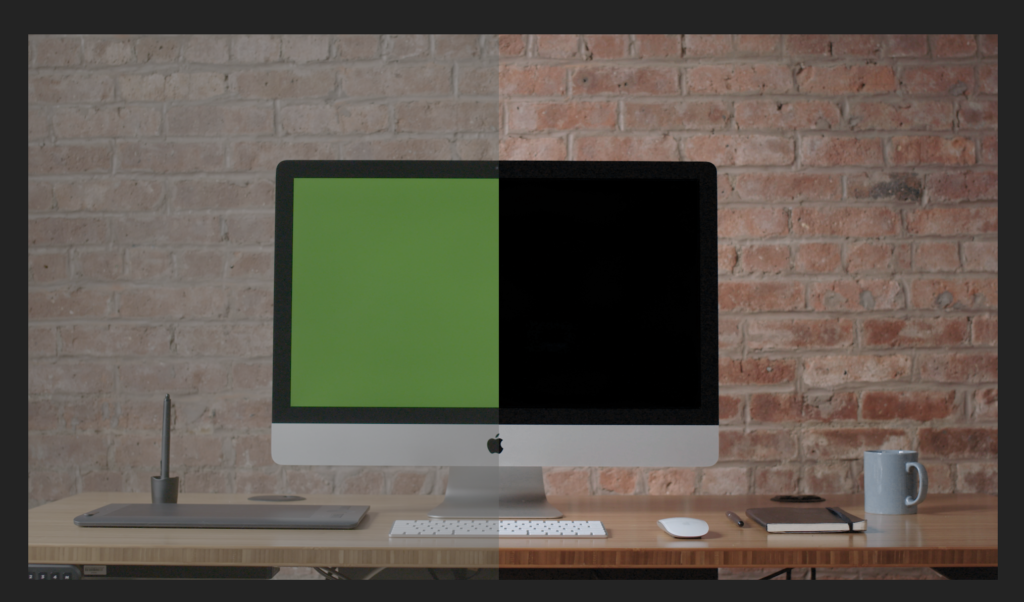
The above image is an example of log footage compared to color-graded footage. The lefthand side, where the screen is green, is the log footage. You can see how it’s been flattened out into shades of gray. On the right, which has been color-graded, the image looks very normal.
Controls
Most sports cameras don’t give you much in the way of controls. They tend to just cover the basics for when you’re out in the woods or on a mountain, with no time to tweak camera settings.
Even though it’s tiny, the RX0 offers all the functionality of a full-sized video camera. In fact, Sony used all the features they use in their other cameras: different focus modes, picture profiles, manual controls, and more. This alone greatly extends the usefulness of the camera beyond sports and adventure.
Image Quality
For a high quality image, megapixels don’t matter as much as bit depth. Bit depth refers to the amount of information in an image. Low bit depth means banding and blown-out highlights. High bit depth gives your footage the ability to store more information per frame, and therefore makes it adjustable and more robust.
Sony built 8-bit 4:2:2 4K output into their RX0. While most people understand 4K, or UltraHD, 8-bit 4:2:2 is not as well known as an indicator of image quality.
Put simply, 4K refers to spatial resolution – in this case, 3840 x 2160 pixels. Meanwhile, 8-bit 4:2:2 chroma subsampling refers to the density of color information contained in each pixel in a given frame. It’s essentially a way of compressing the information contained in each frame to reduce the file size of the video output.
A helpful analogy is to think of footage as a swimming pool. Resolution refers to the surface dimensions of the pool, whereas bit depth refers to the actual depth of the water. The more depth, the more water (or information) it contains. For an image, information translates to shades of color. The more information an image contains, the more robust and complete the image will be.
Focal Length
Action cams like GoPro are normally equipped with a fisheye lens, with the ability to crop in for narrower fields of view. But wide angles are seldom useful in a business environment, and the fisheye distortion needs to be removed afterward.
Sony, however, built a proper 24mm fixed focal length into the RX0, which is a great width for gimbal shots, wide event coverage, or even interview coverage.
In fact, 24mm is the perfect wide-angle coverage for an event or a talk. If you’re using more than one camera to cover the action, the wide angle camera will often be a 35mm or 24mm. And, if you’re recording the raw footage in 4K, and outputting 1080p HD for the finished film, you’ll have the leeway to crop in and change that focal distance if 24mm is too wide for you.
Why Everything Cams are Good For Business Video
By moving away from action or sports-specific settings, the RX0 is firmly in “everything” camera territory. It’s definitely not just an action cam. We think its versatility and quality – and its price point – make it a great option for filming business video.
Here are the most important reasons why that’s the case.
Low Barrier to Entry
The amount of features packed into this little camera, for under $1,000, make it a really competitive option for anyone shopping for a new camera.
And, although we certainly got into some of the finer technical points of this camera in this post, it’s not hard to use. You can be up and running with it in a matter of minutes.
Cameras like the Sony RX0 make it easier for less experienced filmmakers to produce polished, professional results.
Ready to Travel
Typical prosumer cameras with similar features are significantly larger and heavier. By shrinking their best features into a small package, Sony has made it much easier to hit the road with your gear.
Thanks to its small size and durability, you could take this camera nearly anywhere. In fact, you could take several, if you wanted.
Filming at an event could no longer mean lugging large amounts of gear. After all, the smaller the camera, the smaller the tripod you’ll need to support it. The size of the camera has a ripple effect on the size of the rest of the gear you’ll need to support and operate it. Its efficient size will make capturing more video easier than ever.
Multi-Cam Setups
When filming large events, speakers, or interviews, you often want a multi-camera setup. After all, capturing different angles gives you much more to work with when editing your video.
Because the RX0 offers the same color profile settings as its much larger siblings in the Sony line-up, it’s a great option for many multi-cam setups. You’ll be able to easily match the footage after the fact. And, since it’s so small, it’s easy to bring along several and install them on set.
Looking Forward
Sony is the newest in a general push toward small, multi-use cameras, following the Blackmagic Micro Cinema camera and others. The trend illustrates a clear need for this new generation of hardware meant to fit that space between an action cam and a high-end handheld.
After all, as high-quality right-now recorded and streaming video content faces increasing demand, the gear has to keep up. That all-in-one space between action cams and production cams is getting bigger and bigger, and we couldn’t be more excited about it.
The ability to produce premium content with very little gear is quickly becoming the industry standard. We think business video will only stand to benefit from the lower costs and increased efficiency associated with this trend.
Would you buy an everything cam to film your business videos? Did we miss any potential downsides to this trend? Please share your thoughts in the comments below.



